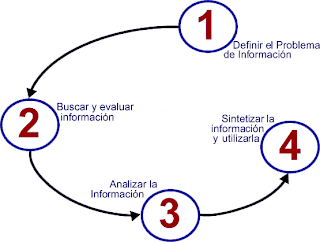GLOSARY
MODEM:The word modem is actually short for Modulator/Demodulator. (There's something you can really impress your friends with). A modem is a communications device that can be either internal or external to your computer. It allows one computer to connect another computer and transfer data over telephone lines.
LAPTOP: Laptop computers, also known as notebooks, are portable computers that you can take with you and use in different environments. They include a screen, keyboard, and a trackpad or trackball, which serves as the mouse.
SERVER:As the name implies, a server serves information to computers that connect to it. When users connect to a server, they can access programs, files, and other information from the server. Common servers are Web servers, mail servers, and LAN servers. A single computer can have several different server programs running on it.
ROUTER:A router is a device that forwards data packets across computer networks.Routers perform the data "traffic directing" functions on the internet.
HUB:In general, a hub is the central part of a wheel where the spokes come together. The term is familiar to frequent fliers who travel through airport "hubs" to make connecting flights from one point to another. In data communications, a hub is a place of convergence where data arrives from one or more directions and is forwarded out in one or more other directions.
FIREWALL: A system designed to prevent unauthorized access to or from a private network. Firewalls can be implemented in both hardware and software, or a combination of both. Firewalls are frequently used to prevent unauthorized Internet users from accessing private networks connected to the Internet, especially intranets.
ACCESS POINT: An access point is a device, such as a wireless router, that allows wireless devices to connect to a network. Most access points have built-in routers, while others must be connected to a router in order to provide network access. In either case, access points are typically hardwired to other devices, such as network switches or broadband modems.
WIRELESS MODEM: A modem and antenna that transmits and receives over the air. Wireless modems support several technologies, including 802.11, Bluetooth, CDPD, DataTAC, Mobitex and Ricochet. There are wireless modems for laptops, handhelds and cellphones. Except for a few analog cellphone models, you cannot plug your cellphone into your laptop's land-based modem even if the cable fits. You generally need a wireless modem on a PC card and a cable designed for your type of phone.
SWITCH: A network switch or switching hub is a computer networking device that connects network segments.The term commonly refers to a multi-port network bridge that processes and routes data at the data link layer (layer 2) of the OSI model. Switches that additionally process data at the network layer (Layer 3) and above are often referred to as Layer 3 switches or multilayer switches.
DATABASE: A datAbase is an organized collection of data for one or more purposes, usually in digital form. The data are typically organized to model relevant aspects of reality (for example, the availability of rooms in hotels), in a way that supports processes requiring this information (for example, finding a hotel with vacancies). The term "database" refers both to the way its users view it, and to the logical and physical materialization of its data, content, in files, computer memory, and computer memory data storage.
PROXY SERVER:In computer networks, a proxy server is a server (a computer system or an application) that acts as an intermediary for requests from clients seeking resources from other servers. A client connects to the proxy server, requesting some service, such as a file, connection, web page, or other resource, available from a different server. The proxy server evaluates the request according to its filtering rules.
SUBWOOFER:A subwoofer is a speaker that is specifically designed only to reproduce the lowest of audible frequencies. For more details on subwoofers, refer to my articles:subwoofers - what you need to know and Passive Subwoofers vs Powered Subwoofers.
EXTERNAL STORAGE:External storage is all addressable data storage that is not currently in the computer's main storage or memory. Synonyms are auxiliary storage and secondary storage.
PRINTER:In computers, a printer is a device that accepts text and graphic output from a computer and transfers the information to paper, usually to standard size sheets of paper. Printers are sometimes sold with computers, but more frequently are purchased separately.
SPEAKERS:Speakers are one of the most common output devices used with computer systems. Some speakers are designed to work specifically with computers, while others can be hooked up to any type of sound system. Regardless of their design, the purpose of speakers is to produce audio output that can be heard by the listener.
PDA:Stands for "Personal Digital Assistant." These are the little electronic devices you see people jotting stuff down on in public. Usually, when you see someone with a PDA, they will be holding it out far front of them for everyone to see. Fortunately, as PDAs become more common, more people will have them and we won't have to deal with the people who make sure everyone else sees that they have one.
OUTLET:An outlet store or factory outlet is a brick and mortar or online retail store in which manufacturers sell their stock directly to the public. Traditionally, a factory outlet was a store attached to a factory or warehouse, sometimes allowing customers to watch the production process like in the original L.L Bean store.
MAINFRAME:Mainframes (often colloquially referred to as "big iron") are powerful computers used mainly by large organizations for critical applications, typically bulk data processing such as census, industry and consumer statistics, enterprise resource planning, and financial transaction processing.
RACK:A 19-inch rack is a standardized frame or enclosure for mounting multiple equipment modules. Each module has a front panel that is 19 inches (482.6 mm) wide, including edges or ears that protrude on each side which allow the module to be fastened to the rack frame with screws.




